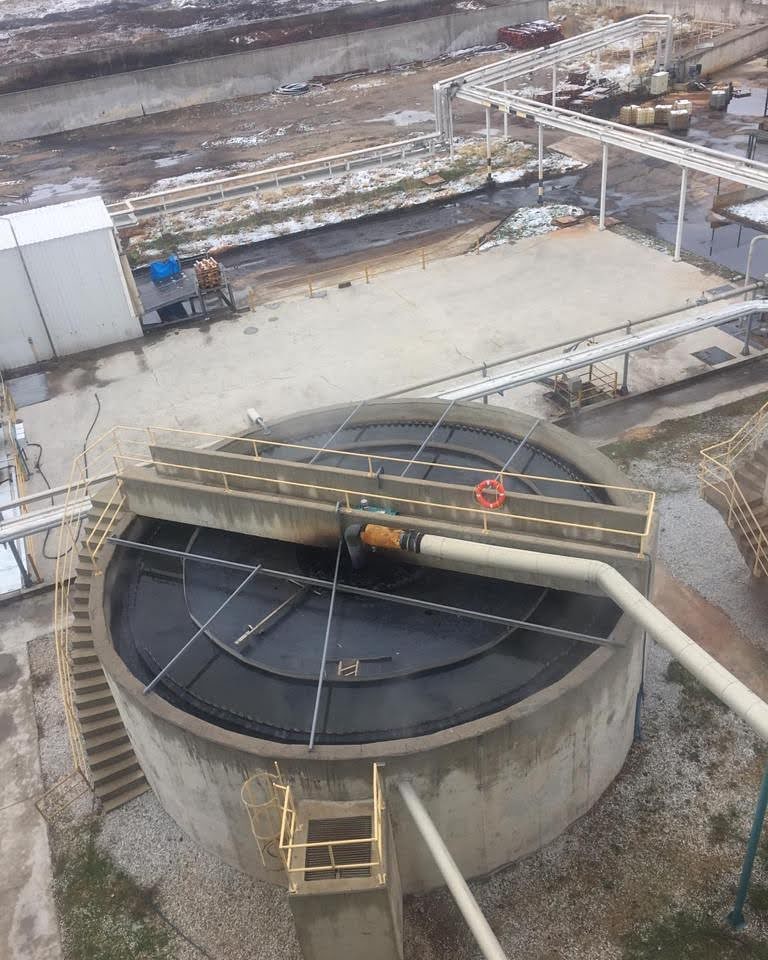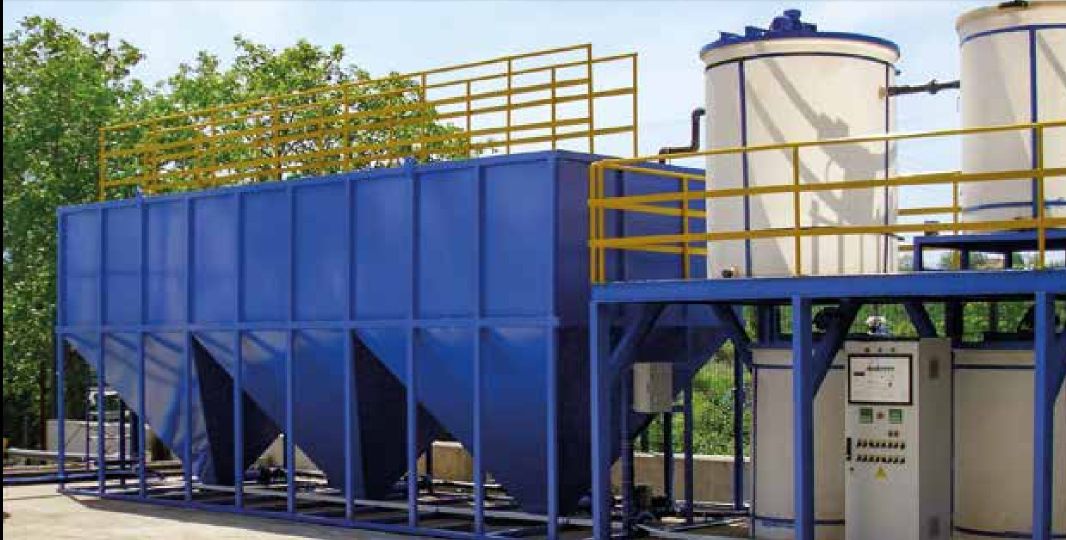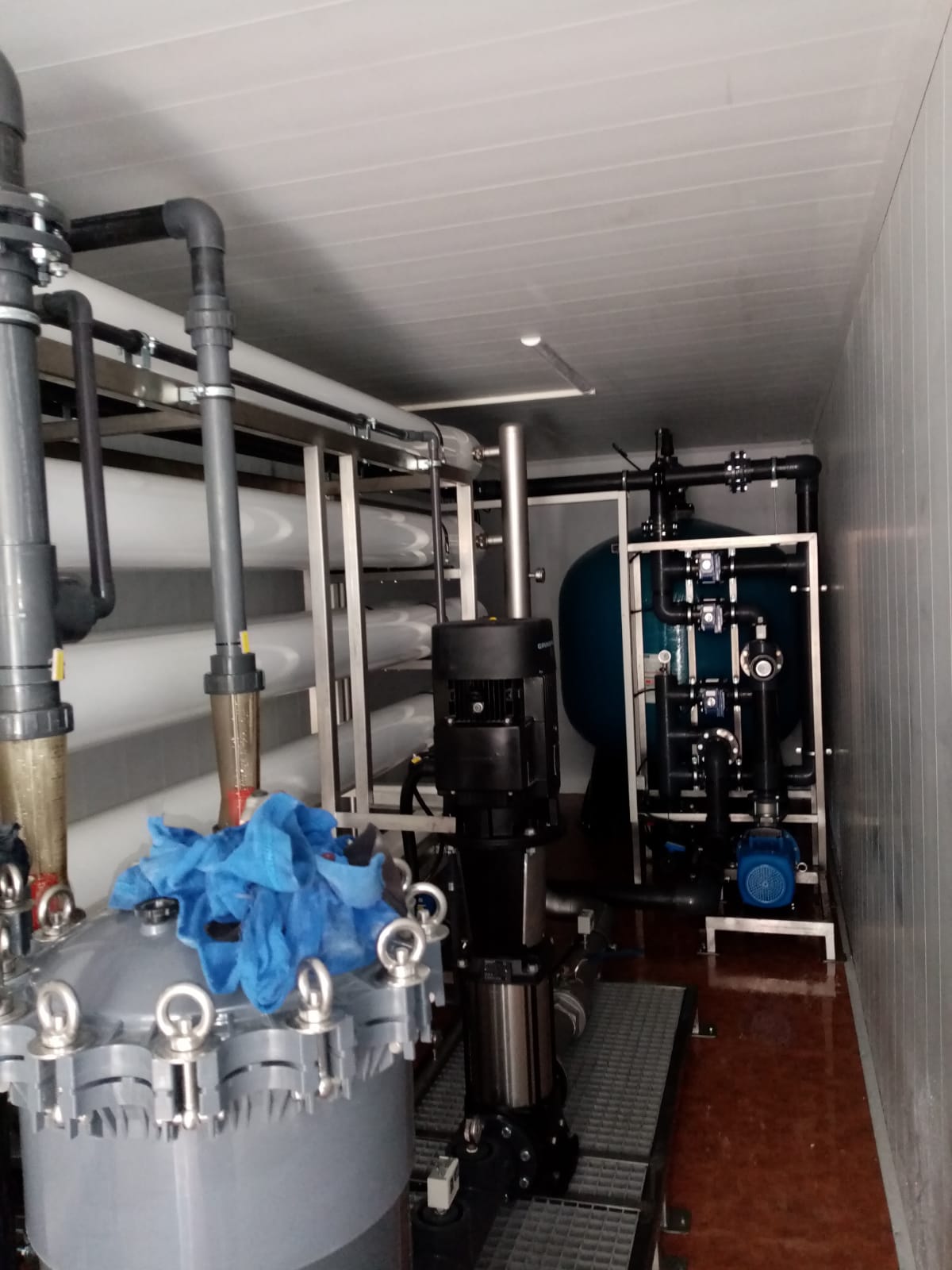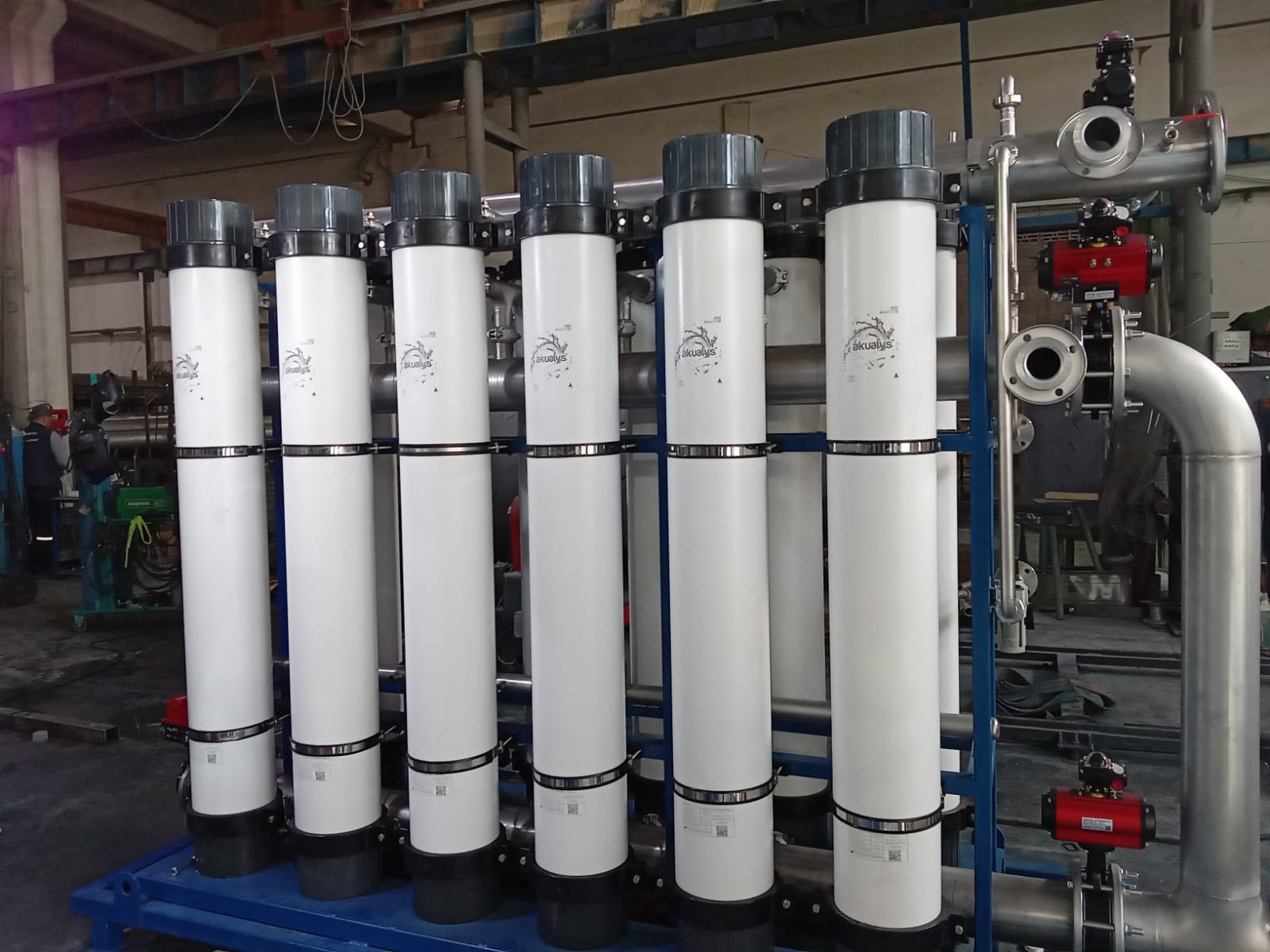RO
RO
Reverse Osmosis (RO) is a water treatment process that removes Dissolved solids (DS) from water by using pressure to force water molecules through a semipermeable membrane. When pressure forces raw water through a semipermeable membrane, water flows from the more concentrated side (more solids) of the RO membrane to the less concentrated side (fewer solids) to provide clean drinking water. The fresh water produced is called the permeate. The concentrated water left over is called waste or brine.
RO water treatment is a breakthrough technology by which drinking water became available for hundreds of millions of people. Today more than 17,000 Desalination plants are built around the globe producing more than 100 million tons /day of potable clean water.
SPECIFICATIONS
of the product

Water Pretreatment Stage
This stage involves the following steps.
High pressure pump: The high pressure pump pushes water through the membrane. Typical pressures for brackish water range from 15 to 25 Bar . In the case of seawater, they range from 54 to 80 Bar. Pumps with such high pressure require substantial amount of energy. Where energy recovery is used, part of the high-pressure pump's work is done by the energy recovery device, reducing energy inputs.
Membrane Assembly: The membrane assembly consists of a pressure vessel with a membrane that allows feedwater to be pushed against it. The membrane is strong enough to withstand the pressure. RO membranes are made in a variety of configurations. The two most common are spiral-wound and hollow-fiber. Only part of the water pumped onto the membrane passes through. The left-behind "concentrate" passes along the saline side of the membrane and flushes away the salt and other remnants. The percentage of desalinated water is referred to as the "recovery ratio", this ratio varies with salinity and system design, typically 20% for small seawater systems, 40% – 50% for larger seawater systems, and 80% – 85% for brackish water. The concentrate flow is typically 3 bar/50 psi less than the feed pressure, and thus retains much of the input energy.
Energy-recovery pump: a reciprocating piston pump. The pressurized concentrate flow is applied to one side of each piston to help drive the membrane feed flow from the opposite side. These are the simplest energy recovery devices to apply, combining the high-pressure pump and energy recovery in a single self-regulating unit. These are widely used on smaller low-energy systems. They are capable of 3 kWh/m3 or less energy consumption.
Acid Dosing: Acid is dosed in order to adjust the pH of the feedwater. The low pH of water will keep the carbonates in soluble form thus preventing the scaling effect of these carbonates.
Antiscalant Dosing : The antiscalants added to raw water will not only prevent formation of calcium carbonate and calcium phosphate scales but will also inhibit scales of sulfate, fluoride ,metal oxides . Antiscalants are claimed to inhibit silica formation as well.
Water Treatment Stage
This stage involves the following steps:
High pressure pump: The high pressure pump pushes water through the membrane. Typical pressures for brackish water range from 15 to 25 Bar . In the case of seawater, they range from 54 to 80 Bar. Pumps with such high pressure require substantial amount of energy. Where energy recovery is used, part of the high-pressure pump's work is done by the energy recovery device, reducing energy inputs.
Membrane Assembly: The membrane assembly consists of a pressure vessel with a membrane that allows feedwater to be pushed against it. The membrane is strong enough to withstand the pressure. RO membranes are made in a variety of configurations. The two most common are spiral-wound and hollow-fiber. Only part of the water pumped onto the membrane passes through. The left-behind "concentrate" passes along the saline side of the membrane and flushes away the salt and other remnants. The percentage of desalinated water is referred to as the "recovery ratio", this ratio varies with salinity and system design, typically 20% for small seawater systems, 40% – 50% for larger seawater systems, and 80% – 85% for brackish water. The concentrate flow is typically 3 bar/50 psi less than the feed pressure, and thus retains much of the input energy.
Energy-recovery pump: a reciprocating piston pump. The pressurized concentrate flow is applied to one side of each piston to help drive the membrane feed flow from the opposite side. These are the simplest energy recovery devices to apply, combining the high-pressure pump and energy recovery in a single self-regulating unit. These are widely used on smaller low-energy systems. They are capable of 3 kWh/m3 or less energy consumption.
Post Treatment Stage
This stage involves the following steps:
pH adjustment: The desalinated water should be stabilized in order to make it agreeable for human consumption as well as to protect downstream pipelines and storage tanks from corrosion . The treated water should have a pH between 6.8 - 8.1 ,this pH can be attained by adding lime or caustic soda to the treated water.
Remineralization: Remineralization may be needed to replace minerals removed from the water by desalination. Special attention should be given to the Magnesium and Calcium contents in the permeate. Water with 45-60 mg/L of Calcium and 20-25 mg/L of Magnesium should be the target and the need for Remineralization is judged accordingly.
Disinfection: Post-treatment disinfection provides secondary protection against compromised membranes and downstream problems. Disinfection by means of ultraviolet (UV) lamps (sometimes called germicidal or bactericidal) may be employed to sterilize pathogens that evade the RO
REFERENCE
- 1200 M3/day DIBIS POWER PLANT UP STREAM – KERTKUK-IRAQ
- 450 M3/day Brackish water treatment – Diwaniyah Iraq
- 350 M3/day Brackish water treatment- Erbil Iraq
- 600 M3/ day Brackish water treatment -South Sudan
- 600 m3/day Brackish water treatment – Algeria
- 450 M3/day Brackish water treatment -Morocco
- 350 M3/day Sea water treatment – Djibouti Naval base
- 600 M3/day Sea water treatment – Morocco
- 1200 M3/day Sea water treatment -North Cyprus
- 900 M3/day Sea water treatment -Basra- Iraq
- 2000 M3/day Sea water treatment - Bodrum -Tukey


















